Why Choose Non-Surgical Cosmetic Treatments?
Non-surgical cosmetic treatments have revolutionized facial rejuvenation by offering effective, safe, and minimally invasive alternatives to traditional surgery. These procedures improve skin quality, reduce wrinkles, restore facial volume, and tighten skin, delivering a refreshed, youthful appearance with minimal downtime. This guide highlights the top non-surgical treatments transforming the aesthetic landscape today.
Key Facts on Non-Surgical Facial Rejuvenation
- Botox and Dysport are neurotoxins that relax overactive facial muscles, reducing dynamic wrinkles.
- Dermal fillers, such as hyaluronic acid-based products, restore volume and contours for a more youthful appearance.
- Laser skin resurfacing, especially fractional CO2 lasers, stimulates collagen production, improving skin texture and tone.
- Chemical peels involve chemical exfoliation to remove damaged skin layers, enhancing skin texture and reducing fine lines.
- Microneedling creates tiny punctures to promote collagen and elastin formation, improving skin smoothness and scars.
- Non-surgical skin tightening uses ultrasound (Ultherapy) or radiofrequency (Thermage) to stimulate collagen and firm tissue.
- Non-invasive fat reduction techniques like CoolSculpting (cryolipolysis) and Kybella (injections) sculpt the body by gradually eliminating fat.
- Injectable neurotoxins are increasingly used for medical conditions like migraines and cosmetic purposes such as lip flipping and jawline slimming.
- Combination therapies, such as Botox with fillers or laser with chemical peels, maximize rejuvenation effects by targeting multiple skin layers.
- Emerging technologies include AI facial mapping, regenerative treatments like exosomes, and RF microneedling, focusing on personalized and long-lasting results.
1. Botulinum Toxin Injections: Smoothing Dynamic Wrinkles
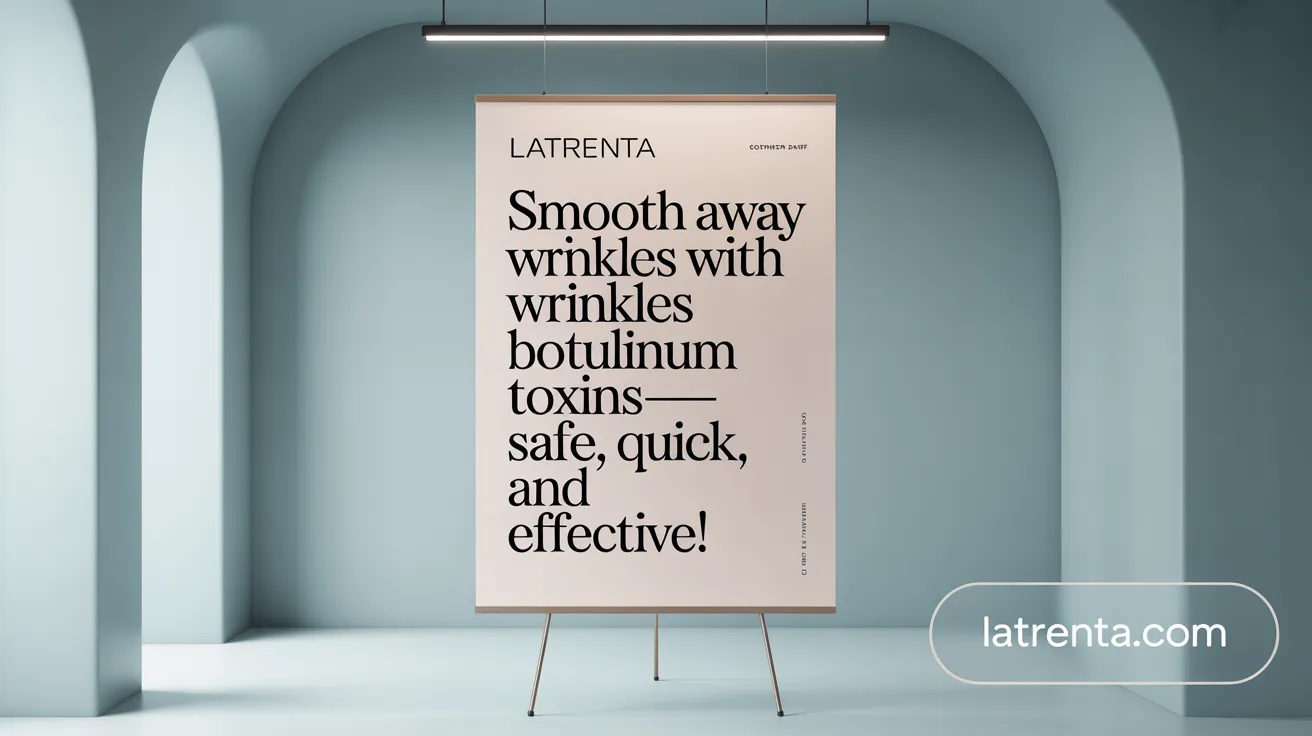
What are non-surgical cosmetic treatments for facial rejuvenation and how do they help achieve a refreshed appearance?
Botox and Dysport are popular non-surgical treatments that target dynamic wrinkles caused by facial muscle activity. These neurotoxins work by temporarily weakening overactive muscles, relaxing them to reduce the appearance of expression lines such as crow's feet around the eyes, frown lines between the brows, and forehead wrinkles. This muscle relaxation results in a smoother, more youthful appearance without the need for invasive surgery.
The effects of these injections typically become noticeable within a few days and can last around three to four months. Regular treatments can help maintain a refreshed look, and they are a quick, minimally invasive option for those seeking facial rejuvenation.
How Botox and Dysport work
Both Botox and Dysport contain botulinum toxin, which blocks nerve signals to specific muscles. This reduces muscle activity, smoothing the skin and decreasing the appearance of fine lines and wrinkles. This mechanism makes these treatments highly effective for addressing facial expressional lines.
Treatment areas and benefits
Common areas treated include the forehead, around the eyes, and between the eyebrows. Aside from wrinkle reduction, these injections can also be used to lift the brow, reduce excessive sweating, alleviate migraines, and improve other aesthetic concerns.
For more insights into Botox use in facial rejuvenation, benefits, and how long results last, searching the phrase can provide extensive resources.
Overall, botulinum toxin injections offer a safe, effective, and non-invasive pathway to revitalizing your appearance, helping you look Young and refreshed without surgery.
2. Dermal Fillers: Restoring Volume and Contours Naturally
 Dermal fillers are among the most popular non-surgical options for facial rejuvenation. They come in various types, including hyaluronic acid-based fillers like JUVÉDERM® and Restylane®, as well as others like Radiesse® and Sculptra®. Hyaluronic acid fillers attract and retain water within the skin, helping to restore fullness and smooth out wrinkles.
Dermal fillers are among the most popular non-surgical options for facial rejuvenation. They come in various types, including hyaluronic acid-based fillers like JUVÉDERM® and Restylane®, as well as others like Radiesse® and Sculptra®. Hyaluronic acid fillers attract and retain water within the skin, helping to restore fullness and smooth out wrinkles.
These fillers are primarily used to enhance facial features such as the cheeks and lips, and to diminish sagging around the nasolabial folds, which are the lines running from the nose to the corners of the mouth. The results are immediate, with added volume providing a more youthful appearance.
The effect of dermal fillers typically lasts from six months to two years, depending on the type used and the area treated. Sculptra, for example, works gradually by stimulating collagen production, offering lasting improvements over a longer period.
The mechanism behind volume restoration involves the injection of gel-like substances into specific facial areas. This not only fills in depleted areas but also encourages collagen growth, which supports longer-term skin health.
Which specific non-surgical treatments are commonly used, and how do they function? Dermal fillers based on hyaluronic acid or other substances restore facial volume lost with age, providing a more youthful contour for six to twelve months.
3. Laser Skin Resurfacing: Renewing Skin Texture and Tone
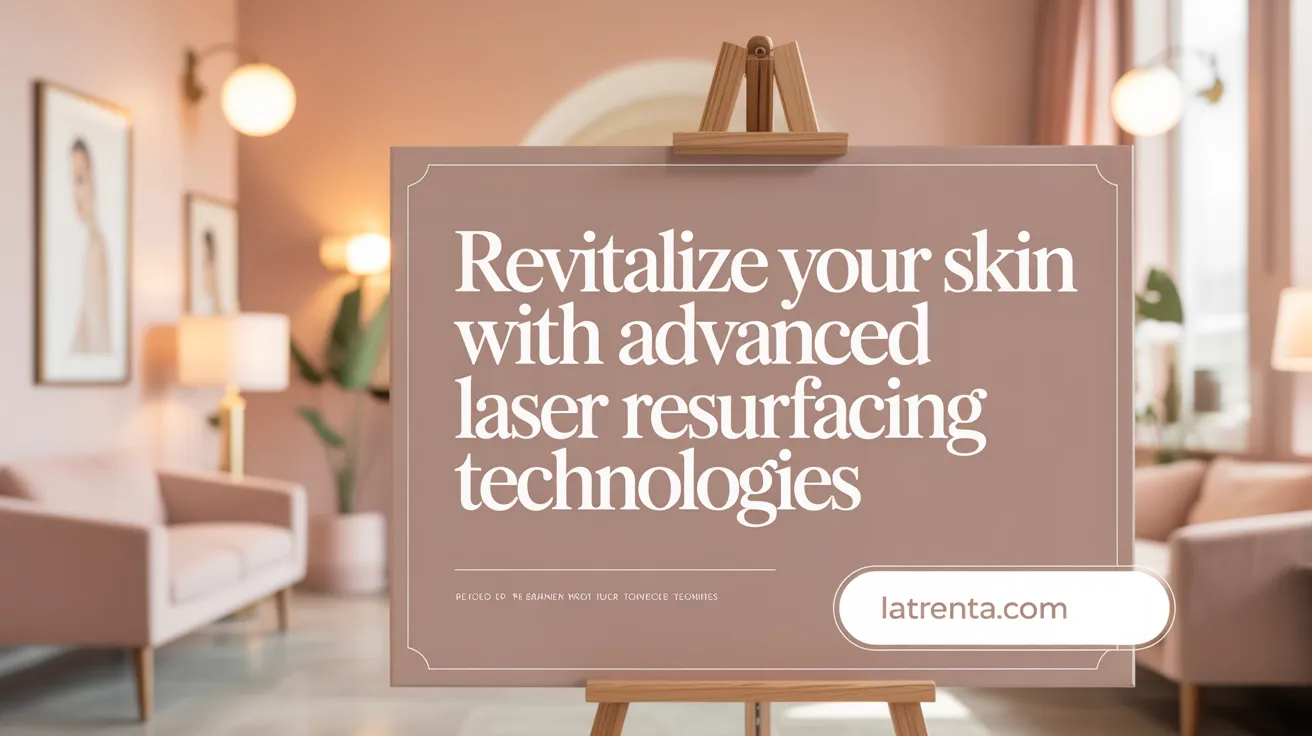
Which specific non-surgical treatments are commonly used, and how do they function?
Laser therapies, particularly fractional CO2 lasers, are widely used non-surgical treatments for skin rejuvenation. These lasers work by creating tiny controlled injuries in the skin, which stimulate the body's natural healing process. This leads to increased collagen production, resulting in improved skin texture, reduced wrinkles, and diminished sun damage.
There are two main types of laser resurfacing:
| Type of Laser | Description | Treatment Target | Additional Details |
|---|---|---|---|
| Ablative | Removes outer skin layers, promoting new skin growth | Deep wrinkles, scars, severe sun damage | Often requires downtime for healing |
| Non-Ablative | Heats the inner layers of skin without removing outer layers | Mild to moderate sun damage, fine lines | Minimal recovery time |
Fractional CO2 lasers are a popular choice due to their ability to target specific skin areas with precision while sparing surrounding tissue, making the treatment effective for smoothing wrinkles and scars. They can be tailored to the patient’s needs, providing significant improvements in skin tone and texture.
In conclusion, laser skin resurfacing via fractional CO2 technology offers a powerful way to refresh the skin, reduce signs of aging, and promote collagen growth for long-lasting youthful skin.
4. Chemical Peels: Exfoliation for Radiant Skin
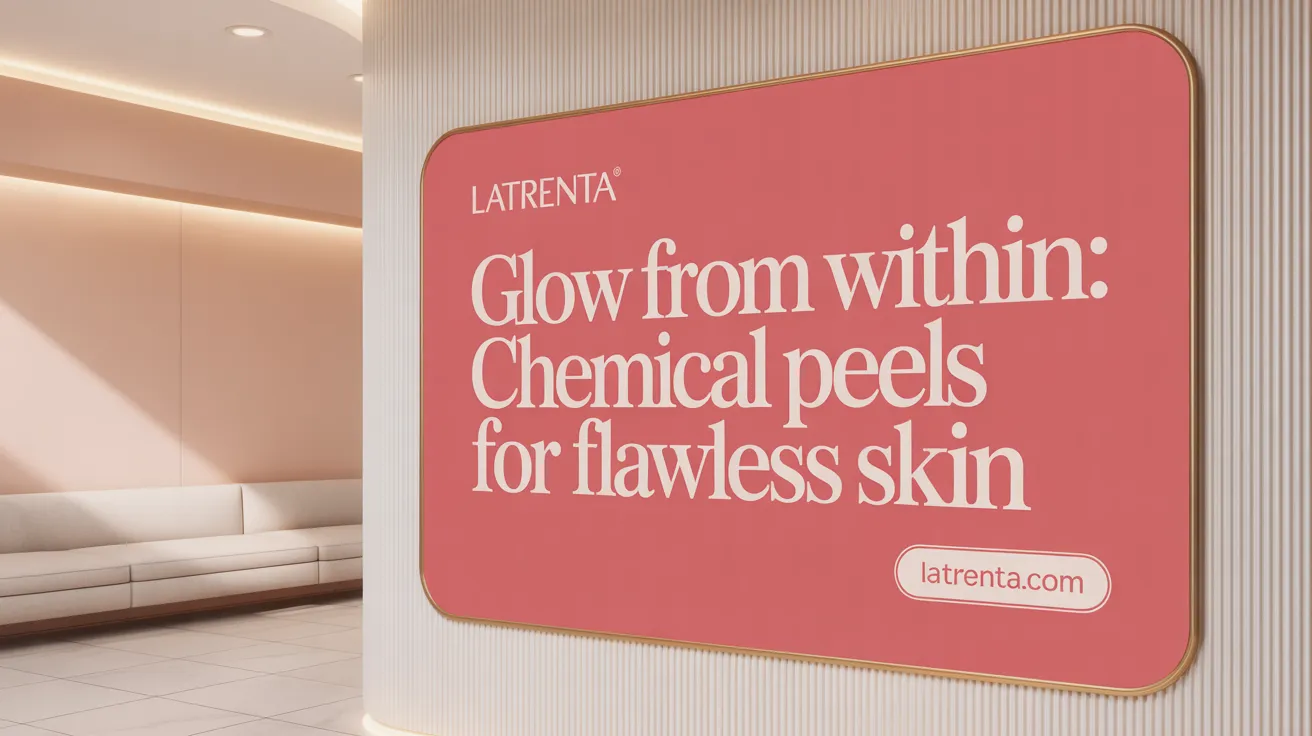 Chemical peels come in various strengths, from light peels like the Glycolic Acid Peel and Jessner’s Peel to deep peels such as phenol-based treatments. These procedures help improve skin texture, reduce fine lines, and diminish scars caused by acne or sun damage. By removing the damaged outer layers of skin, chemical peels stimulate the growth of new, healthy skin.
Chemical peels come in various strengths, from light peels like the Glycolic Acid Peel and Jessner’s Peel to deep peels such as phenol-based treatments. These procedures help improve skin texture, reduce fine lines, and diminish scars caused by acne or sun damage. By removing the damaged outer layers of skin, chemical peels stimulate the growth of new, healthy skin.
The peeling process safely eliminates a specific skin layer, depending on the peel type, allowing for customization based on individual skin concerns. Light peels typically require little to no downtime, while deep peels may need a longer recovery period.
Most patients benefit from multiple sessions spaced weeks apart. Regular maintenance treatments help sustain the results, keeping the skin looking refreshed and youthful. For ongoing skin health, using sun protection and proper skincare routines is essential to support the skin’s renewal process.
5. Microneedling: Stimulating Collagen for Smoother Skin
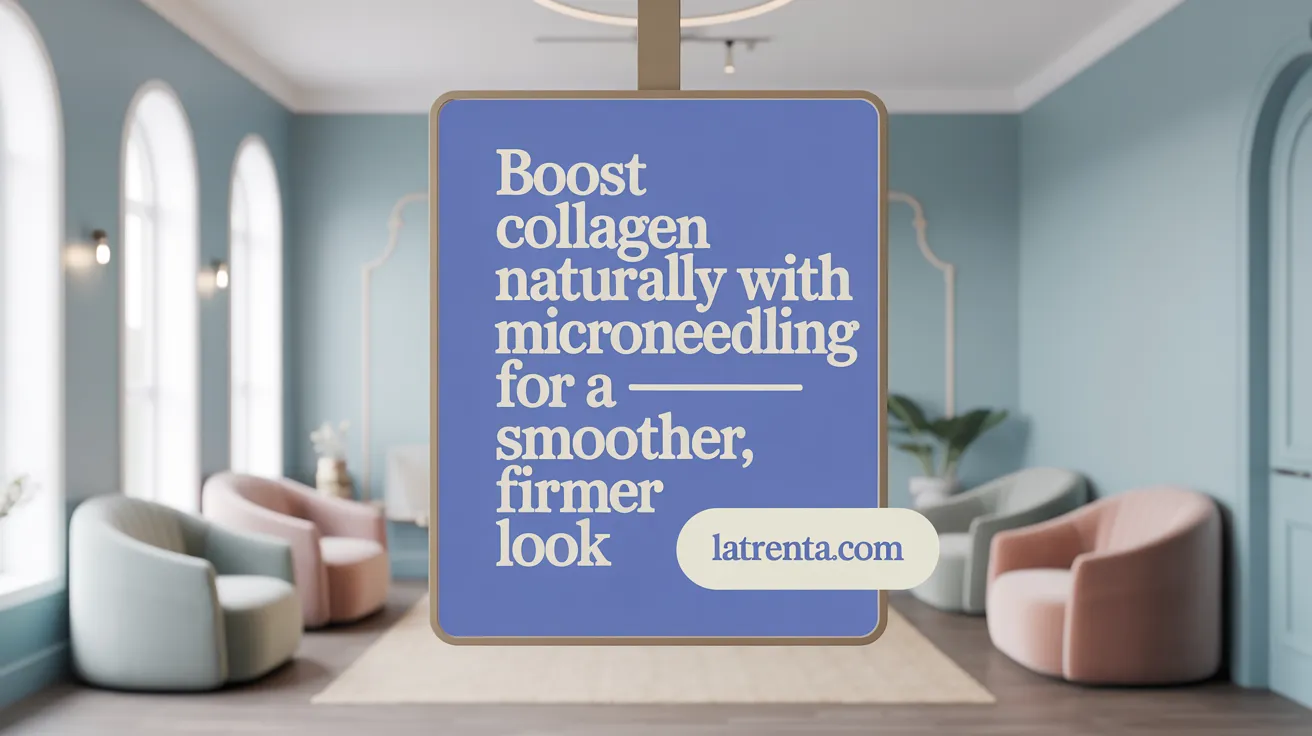
Which specific non-surgical treatments are commonly used, and how do they function?
Microneedling is a popular non-surgical treatment that involves creating tiny punctures in the skin using fine needles.
This process promotes the body's natural collagen and elastin production, which are essential for skin firmness and elasticity.
The micro-injuries trigger the skin’s healing response, leading to improved texture, reduced fine lines, acne scars, and enlarged pores.
Often, microneedling is combined with Platelet-Rich Plasma (PRP) therapy, where a patient’s own blood is processed to extract growth factors and then applied or injected into the skin.
This combination enhances the regenerative effects, providing a more youthful, smoother complexion.
Minimally invasive with little downtime, microneedling offers visible improvements that can last several months, especially when repeated periodically.
6. Non-Surgical Skin Tightening: Firming Without Cuts
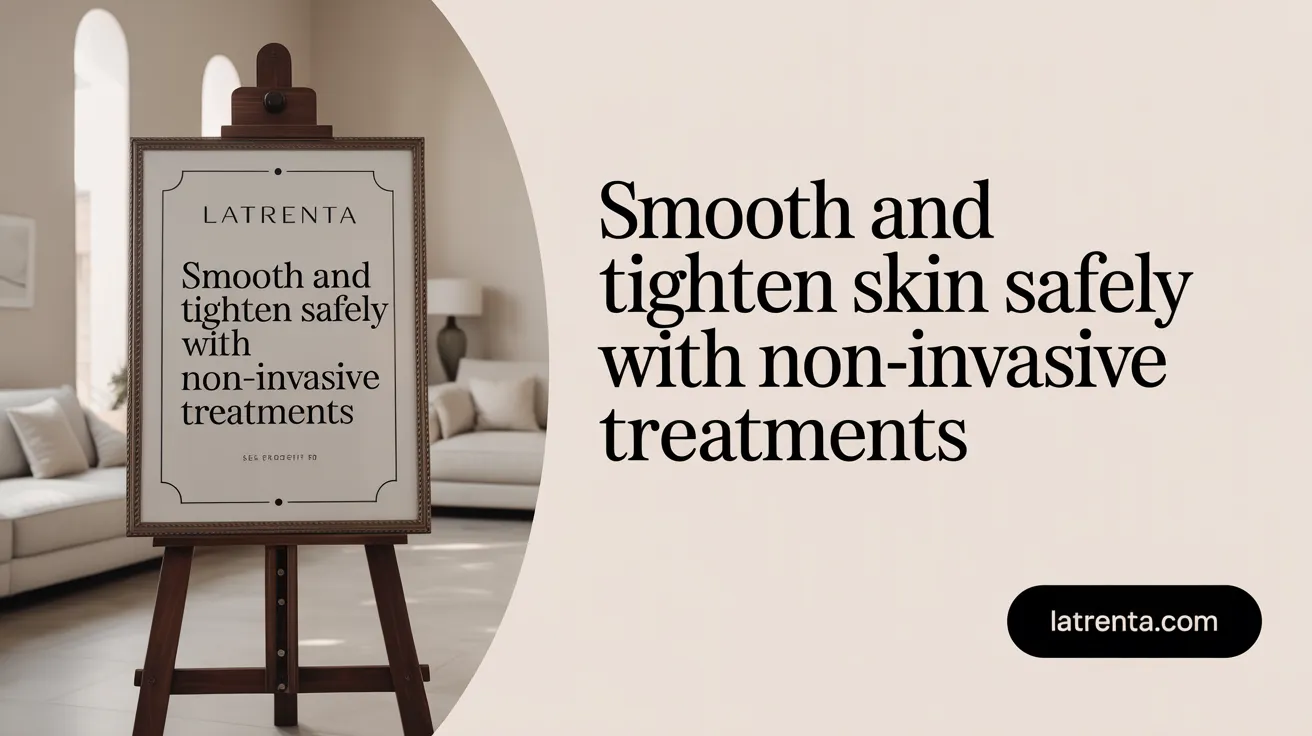 Non-surgical skin tightening involves using advanced technologies that stimulate your body's own collagen production to achieve firmer, smoother skin.
Non-surgical skin tightening involves using advanced technologies that stimulate your body's own collagen production to achieve firmer, smoother skin.
Two popular methods are ultrasound-based treatments like Ultherapy for chin and neck and radiofrequency treatments such as Thermage skin tightening. Ultherapy uses focused ultrasound energy to heat deep skin layers, which triggers collagen remodeling and lifting. It is FDA-approved for areas like the brow, chin, neck, and chest, with results typically visible in a few months.
Thermage employs radiofrequency energy to heat the skin's inner layers, stimulating collagen and elastin fibers. This process tightens loose skin on the face and body and can last several years.
The underlying mechanism of both treatments involves heating deeper skin structures to encourage the natural production of collagen and elastin, proteins essential for skin elasticity and firmness.
Recommended for individuals with mild to moderate skin laxity, these procedures are minimally invasive, require little to no downtime, and are suitable for those seeking a non-surgical approach to facial and body tightening.
7. Non-Invasive Fat Reduction: Sculpting Without Surgery
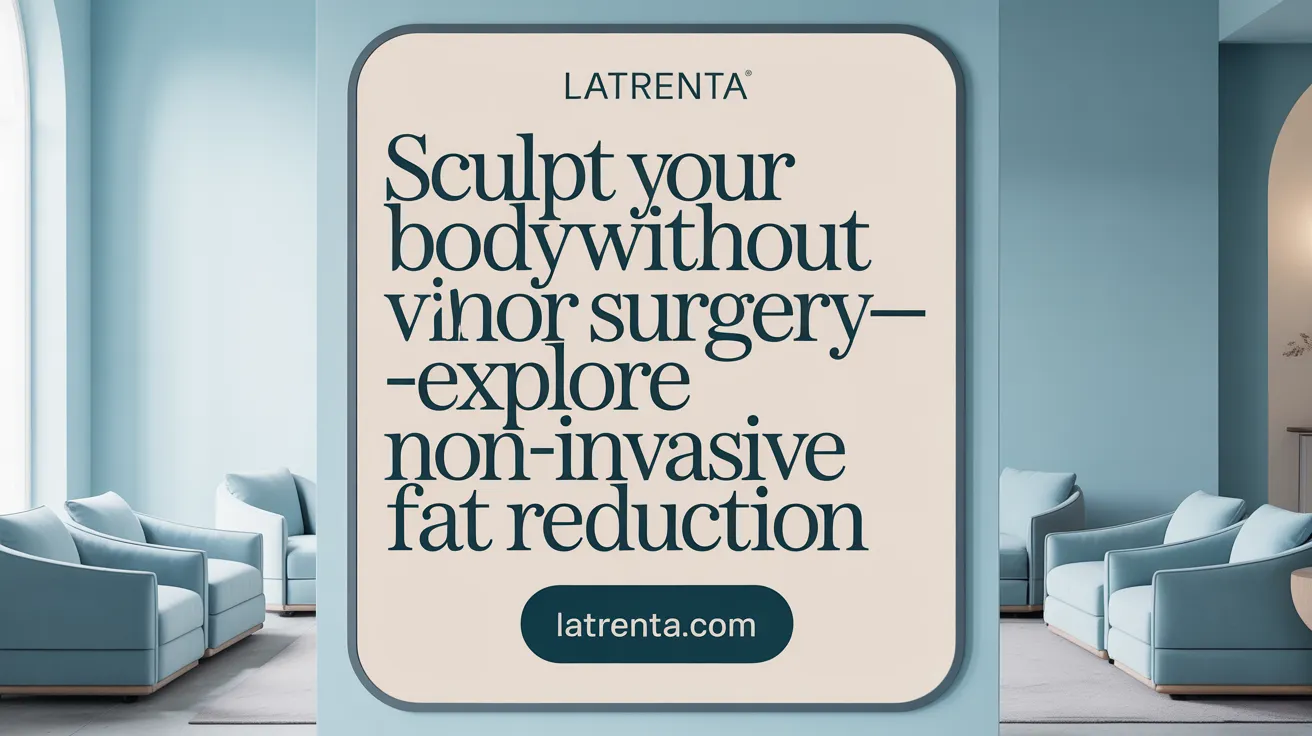 Non-surgical fat reduction offers a safe and convenient way to shape your body without the need for invasive procedures. Among the most popular options, CoolSculpting utilizes a freezing technology called cryolipolysis to target and solidify stubborn fat pockets. Over time, the body naturally metabolizes these frozen fat cells, leading to a more contoured appearance.
Non-surgical fat reduction offers a safe and convenient way to shape your body without the need for invasive procedures. Among the most popular options, CoolSculpting utilizes a freezing technology called cryolipolysis to target and solidify stubborn fat pockets. Over time, the body naturally metabolizes these frozen fat cells, leading to a more contoured appearance.
Another effective treatment is Kybella, which involves injections that dissolve small fat deposits, particularly under the chin. This process reduces a double chin and enhances the jawline without surgery.
Both treatments boast the key benefit of having no downtime, allowing patients to return to their daily routines immediately. They stimulate the body's natural fat metabolism, providing gradual and natural-looking results. Compared to surgical fat removal, these non-invasive options are less risky, less painful, and require fewer recovery precautions.
When considering options for fat reduction, it is helpful to search for further information using phrases like "CoolSculpting for Stubborn Fat" and "Kybella fat reduction injection" to find detailed reviews and success stories.
8. Injectable Neurotoxins: Beyond Wrinkles

What are some current trends, popular treatments, and emerging technologies in non-surgical aesthetic medicine?
Injectable neurotoxins such as Botox, Dysport, Xeomin, and Jeuveau have long been staples for reducing facial wrinkles by relaxing overactive muscles. However, recent trends showcase a broader application spectrum. Advanced techniques like Micro-Botox involve smaller doses of toxins injected with fine needles into the skin’s superficial layers. This approach helps smooth fine lines, diminish pore size, and improve skin texture, offering a more natural look.
Baby Botox, characterized by lighter doses, is popular for maintaining a subtle, more natural appearance. It also allows for more precise adjustments in facial expressions, avoiding the “frozen” look often associated with traditional Botox doses.
Beyond cosmetic wrinkle treatment, neurotoxins are increasingly used for medical benefits. They effectively reduce migraines, excessive sweating (hyperhidrosis), neck bands, and even help with jawline slimming and chin contouring. Additionally, Botox is employed for lip flipping—a procedure where the upper lip appears fuller and more youthful by relaxing specific muscles.
These innovations and expanded uses demonstrate the evolving role of neurotoxins. They now serve diverse aesthetic goals while providing functional relief for medical conditions.
More info: Advanced Botox techniques and new neurotoxin uses
By exploring new administration methods and expanded indications, non-surgical neurotoxins continue to be at the forefront of aesthetic medicine, combining cosmetic enhancement with medical therapy.
9. Combination Therapies: Maximizing Rejuvenation Effects
 To achieve optimal facial rejuvenation, many practitioners now employ combination therapies—integrating various non-surgical treatments to enhance and prolong results.
To achieve optimal facial rejuvenation, many practitioners now employ combination therapies—integrating various non-surgical treatments to enhance and prolong results.
One popular approach is the synergistic use of Botox treatments and dermal fillers. Botox relaxes active muscles responsible for dynamic wrinkles, such as frown lines and crow's feet, while fillers restore volume lost with age in cheeks, lips, and nasolabial folds. When combined, these treatments offer a natural, refreshed appearance with minimized wrinkle prominence.
Incorporating laser resurfacing alongside chemical peels allows skin to benefit from both superficial exfoliation and deeper skin regeneration. Laser treatments can address sun damage, scars, and uneven texture, while peels improve pigmentation and fine lines, creating comprehensive skin renewal.
Radiofrequency microneedling (RF microneedling) with injectables is another advanced option. RF microneedling stimulates collagen at multiple skin levels, enhancing skin firmness. When infused with platelet-rich plasma (PRP) or hyaluronic acid, it amplifies skin rejuvenation, improving texture, elasticity, and glow.
A personalized treatment plan is vital. By assessing individual skin conditions, aging concerns, and treatment goals, practitioners can select the most effective modalities—sometimes layering procedures in a sequence that maximizes healing, collagen stimulation, and aesthetic results.
This multi-modality approach reflects current trends in non-surgical aesthetic medicine, emphasizing natural-looking improvements with minimal downtime.
What are some current trends, popular treatments, and emerging technologies in non-surgical aesthetic medicine? Combination treatments, such as the use of Botox and dermal fillers with laser resurfacing or chemical peels, maximize results through a tailored, multi-modality approach.
More info search query: Benefits of combination non-surgical cosmetic treatments
10. Emerging Technologies: The Future of Non-Surgical Aesthetics
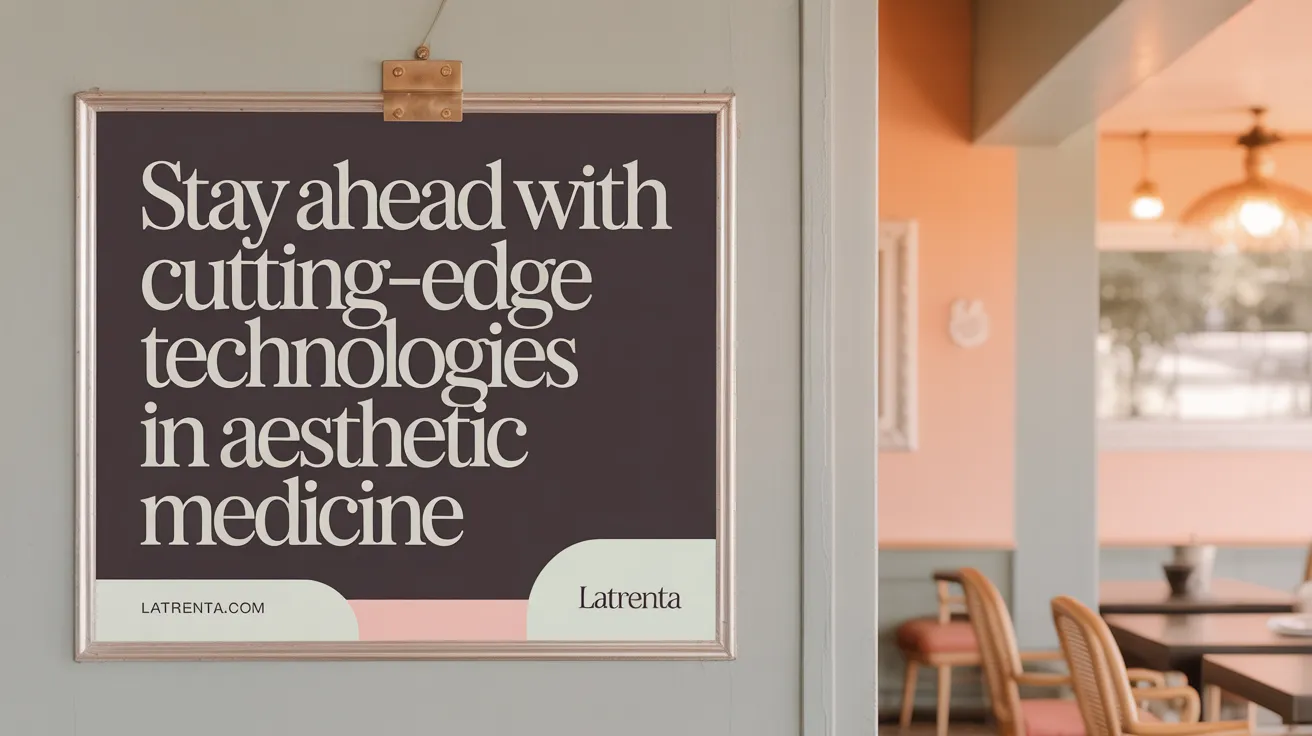
What are some current trends, popular treatments, and emerging technologies in non-surgical aesthetic medicine?
The landscape of non-surgical aesthetic medicine is rapidly evolving with innovative technologies that prioritize natural results and minimal downtime. AI-assisted facial mapping is increasingly used to customize treatment plans, ensuring precise targeting of areas needing enhancement while preserving facial harmony.
Collagen-stimulating fillers like Sculptra and Radiesse are gaining popularity due to their ability to promote long-term skin rejuvenation by encouraging the body's natural collagen production. These bio-stimulatory options can provide more durable outcomes compared to traditional fillers.
Regenerative medicine approaches, including the use of exosomes and platelet-rich plasma (PRP), are also emerging. These methods aim to repair and regenerate skin tissue at a cellular level, improving skin texture, tone, and elasticity.
Non-invasive devices such as EMFace combine radiofrequency and electromagnetic stimulation to lift, tighten, and tone the face non-surgically. Similarly, RF microneedling devices effectively stimulate collagen and elastin, addressing skin laxity, scars, and fine lines.
In summary, the future of non-surgical treatments is focused on personalized, regenerative, and minimally invasive options that amplify the body's natural healing processes. These advancements promise safer, longer-lasting rejuvenation with fewer side effects.
For more insights into these innovative technologies, searching latest trends in non-surgical facial rejuvenation is highly recommended.
Understanding Non-Surgical Cosmetic Treatments and Their Benefits
What are non-surgical cosmetic treatments for facial rejuvenation and how do they help achieve a refreshed appearance?
Non-surgical cosmetic treatments encompass a range of minimally invasive procedures designed to enhance the skin’s appearance and reduce visible signs of aging. These include injections like Botox treatments, dermal fillers, laser therapies, chemical peels, microdermabrasion, microneedling, and radiofrequency treatments.
Botox and Dysport, for example, work by temporarily relaxing the facial muscles responsible for dynamic wrinkles like crow’s feet and frown lines. Results are usually visible within a few days and last about three months.
Fillers made from hyaluronic acid or other substances help restore lost facial volume, smoothing deep lines and augmenting features such as lips and cheeks. Their effects generally last from six months to a year or more, providing an immediate youthful contour. Examples include Juvederm, Restylane, and Radiesse.
Laser treatments and skin resurfacing techniques target sun damage, scars, enlarged pores, and uneven texture. They stimulate collagen production, promoting the regeneration of healthier, more elastic skin.
These procedures are performed with minimal discomfort and downtime, making them attractive options for individuals seeking to refresh their look without undergoing surgery. When administered by skilled professionals, they can collectively produce a smoother, more vibrant face with natural results.
Benefits and Safety Considerations of Non-Surgical Cosmetic Treatments
What are the main benefits and advantages of choosing non-surgical cosmetic treatments?
Non-surgical cosmetic treatments provide many appealing benefits, making them a popular choice for those seeking aesthetic enhancements with less risk. These procedures typically involve minimal to no downtime, allowing patients to resume daily activities almost immediately after treatment. They are generally more affordable than surgical options, which include expenses related to anesthesia and prolonged recovery periods.
The safety profile of non-invasive treatments is favorable, with a low risk of complications. Common side effects like bruising, redness, or swelling are usually temporary and resolve quickly. Many procedures, such as BOTOX® Cosmetic and dermal fillers, produce rapid, natural-looking results within days, offering an efficient way to refresh appearance.
Another advantage is the ability to customize treatments to target specific concerns like dynamic wrinkles, volume loss, or skin texture. Because they are minimally invasive, these treatments carry fewer risks such as scarring or infections that are associated with surgery. Patients can also opt for periodic maintenance treatments to preserve or enhance their results.
While effects are temporary, requiring repeat sessions every few months to years, non-surgical approaches allow for gradual and subtle improvements, aligning well with personal preferences for natural-looking rejuvenation. Overall, these options blend convenience, safety, and effectiveness, making them a preferred choice for many aiming to improve their appearance without undergoing surgery. For more detailed information, see Benefits of Non-surgical Cosmetic Treatments.
Comparing Non-Surgical and Surgical Options: What You Need to Know
How do non-surgical aesthetic treatments compare to surgical options in terms of outcomes, risks, and recovery?
Non-surgical aesthetic treatments generally provide more subtle and natural-looking improvements. These minimally invasive procedures, such as Botox treatments, dermal fillers, laser resurfacing, and chemical peels, typically carry lower risks of complications and involve little to no downtime. Patients can usually resume their daily activities immediately or within a few days, making them an attractive choice for those seeking quick results with minimal inconvenience.
In contrast, surgical options like facelifts or brow lifts aim for more dramatic and long-lasting changes. Surgery often involves higher risks, such as bleeding, infection, scarring, and more significant anesthesia-related concerns. Recovery times are longer—often several weeks—due to the healing process required for incisions and tissue manipulation.
While nonsurgical treatments are generally temporary—lasting months to a couple of years—they can be combined with subsequent procedures or serve as a prelude to surgery. Surgical procedures tend to deliver enduring results, often lasting for many years or permanently, but at increased cost and with a higher commitment to recovery.
It's crucial for patients to understand that nonsurgical options can be excellent for minor aging signs or for those not ready for surgery. However, for extensive sagging or deep wrinkles, surgery might be the more effective solution.
Ultimately, an individual assessment by a qualified specialist helps determine the best treatment plan, balancing desired outcomes with safety considerations. Setting realistic expectations and understanding the limitations and benefits of each approach are essential steps toward achieving satisfying results.
Selecting Qualified Providers and Ensuring Treatment Safety
How can patients select qualified providers, and what safety considerations should they be aware of when pursuing non-surgical cosmetic treatments?
Patients seeking non-surgical cosmetic procedures should prioritize selecting providers with the appropriate medical credentials and specific training in aesthetic medicine. Ideal practitioners are licensed physicians, nurse practitioners, or physician assistants who have extensive experience in cosmetic treatments such as Botox treatments, dermal fillers, and laser procedures.
To verify a provider’s qualifications, healthcare consumers should review their professional background, looking for board certification in facial aesthetics or dermatology. Examining before-and-after photos and reading patient reviews can offer additional insight into the provider’s skill and results. Consulting directly with the practitioner before treatment allows patients to ask about their experience, approach, and specific expertise.
Safety considerations are paramount. Patients should ensure treatments are performed in an accredited, sterile environment, overseen by qualified medical personnel. It’s vital to discuss potential side effects, contraindications, and the expected outcomes upfront.
Patients are also advised to avoid providers who make unrealistic promises or pressure them into treatments. The importance of transparency, proper patient assessment, and personalized treatment planning cannot be overstated.
Ultimately, choosing a reputable, experienced provider, combined with thorough pre-treatment consultation and following prescribed aftercare, significantly minimizes risks and ensures natural, satisfying results with safety at the forefront.
Embracing Non-Surgical Treatments for Lasting Youthful Radiance
Non-surgical cosmetic treatments offer versatile, effective ways to achieve a refreshed and youthful facial appearance with minimal risk and downtime. From muscle-relaxing injectables to advanced laser therapies and skin tightening techniques, these options provide tailored solutions that enhance natural beauty while promoting skin health. By consulting experienced professionals and staying informed about evolving technologies, individuals can confidently embrace non-surgical approaches as part of their ongoing skincare and rejuvenation regimen, enjoying natural yet noticeable results that revitalize confidence and well-being.
